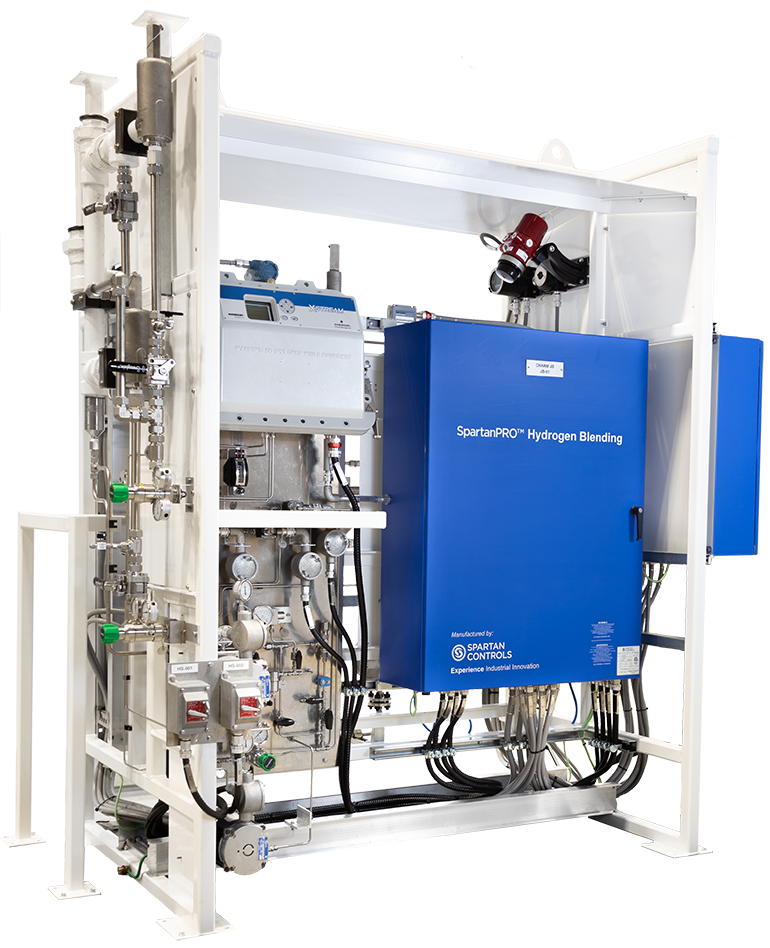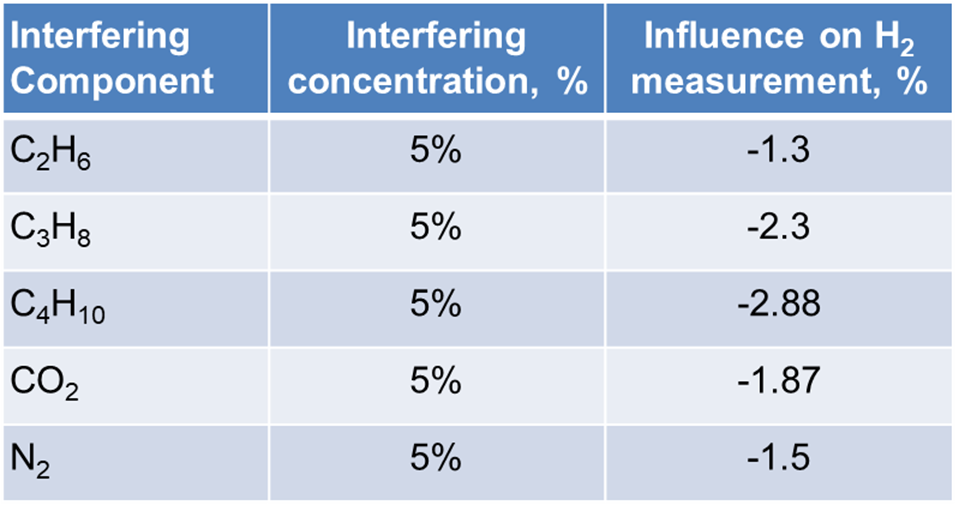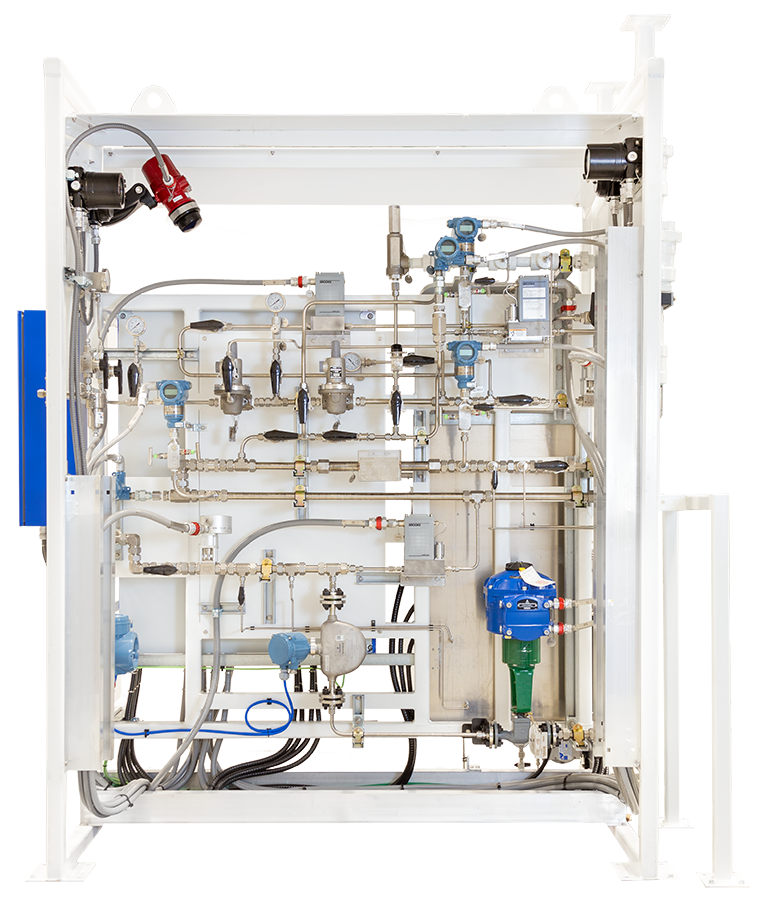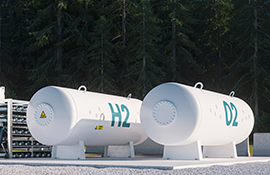Author: Ryan McKimmie
As the world looks to decarbonize, hydrogen has emerged as a promising new tool to reduce emissions in the near term. While gas distribution companies actively investigate the use of pure hydrogen in place of natural gas, short-term solutions involve blending hydrogen into existing natural gas pathways for use in existing natural gas fired appliances. Some gas distribution companies worldwide, including here in Alberta, have already started providing communities with “blended natural gas,” with plans to increase both the hydrogen blend percentage and the number of customers receiving blended gas. Blending hydrogen into natural gas presents challenges, and accuracy is essential for the safety of downstream consumers. In this post, we’ll explore some of the main challenges that need to be overcome in this application, and review how the SpartanPRO™ Hydrogen Blending solution addressed each of them.
As global decarbonization efforts gain momentum, certain applications are proving more challenging to decarbonize than others. Heating homes, businesses, and institutions, for instance, accounted for approximately 11% of overall Canadian emissions in 2020 (Government of Canada, 2022). Any initiative aiming to reduce these emissions in the near term would have a significant impact on numerous stationary combustion sources across the country, including residential, commercial, and other buildings.
For gas distribution companies to safely blend hydrogen into their distribution networks, they’ll need a solution that ensures accurate hydrogen concentration delivery to consumers.
One approach to reducing emissions from these sources in the short term is to use low concentrations of hydrogen in the natural gas supply to help lower overall emissions. Current studies indicate that existing natural gas distribution infrastructure can accommodate 20% v/v hydrogen blended natural gas, resulting in a 7% decrease in home heating emissions (Congressional Research Service, n.d). While this represents an initial step towards net-zero targets, it allows individual Canadians to contribute to a low-carbon future without costly heating system retrofits. Additionally, it would quickly establish a large and flexible market for hydrogen, thereby reducing investment risks prospective hydrogen production companies.
For gas distribution companies to safely blend hydrogen into their distribution networks, they’ll need a solution that ensures accurate hydrogen concentration delivery to consumers, which is able to react responsively to rapidly changing consumer demand, and is built on a solid foundation of modern, digitally connected hardware that enables data movement.


The presence of high-accuracy analyzers in a control algorithm can result in the introduction of deadband. This is why our solution utilizes the included Model Predictive Control (MPC) capabilities of Emerson's PK Controller. By leveraging MPC, our solution effectively addresses deadband issues. It enables quick response to changes in gas demand, ensuring accurate and closely controlled maintenance of the hydrogen ratio in the outgoing gas to consumers.

Another significant benefit of the SpartanPRO Hydrogen Blending solution is the turndown ratio. As gas distribution companies increase hydrogen blend ratios from 0 to 20%, accommodating varying flowrates associated with different gas demands becomes crucial. Our solution utilizes multiple hydrogen and natural gas trains to accurately control flowrates across the entire operating envelope.
Perhaps the most important consideration for this application is safety. Our solution incorporates integral hydrogen flame and hydrogen gas detection directly into the PK controller, providing swift response to any flame or gas detection event. The hydrogen flame detector is specifically tailored to the hydrogen application, with triple infrared (IR) detection capabilities that focus on the specific thermal signature of a hydrogen flame. This eliminates false positives and instills operators with confidence in the accuracy of their flame detection system.
Lastly, our solution is built on a scalable architecture, allowing it to perform with the same level of accuracy in both small demonstration-scale applications and large-scale hydrogen blending applications.
Perhaps the most important consideration for this application is safety. Our solution incorporates integral hydrogen flame and hydrogen gas detection directly into the PK controller, providing swift response to any flame or gas detection event.
In summary, the SpartanPRO Hydrogen Blending solution is tailored to blend hydrogen into gas distribution streams. It combines the Hydrogen Analyzer, Model Predictive Control algorithms, and multiple hydrogen and natural gas trains to ensure precise maintenance of the desired blending ratio across various flowrates and setpoints. The solution also incorporates cutting-edge hydrogen fire and gas detection capabilities, making it an industry leader in safety measures. Additionally, it provides scalability across a diverse range of applications; from blending gas to industrial gas-powered turbines, to systems tailored to meet the gas demands of a single residential home.
For more information visit: Hydrogen Blending Solutions
Sources:
Government of Canada. "Sources and Sinks of Greenhouse Gas Emissions - Executive Summary 2022." Government of Canada, Department of Environment and Climate Change, 2022, https://www.canada.ca/en/environment-climate-change/services/climate-change/greenhouse-gas-emissions/sources-sinks-executive-summary-2022.html.
Congressional Research Service. “Pipeline Transportation of Hydrogen: Regulation, Research, and Policy.” Congressional Research Service Reports, Product Number R46700, n.p., Web. https://crsreports.congress.gov/product/pdf/R/R46700


